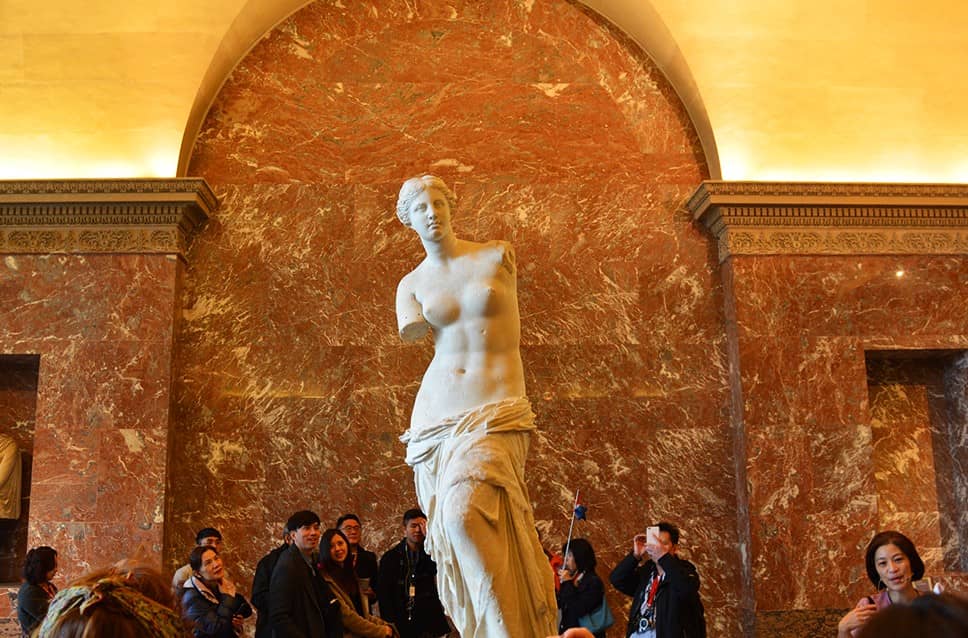Most Popular Exhibits at the Louvre
Allow us to let you in on a brilliant way to experience France. Visit Paris and see the majestic Louvre! The museum is perhaps the most famous and the most visited in the world. With over 300,000 paintings and other exhibits on display, you wouldn’t want to miss this golden opportunity.
Housed inside the former imperial palace of France’s royalty, the museum is a repository of diverse arts from different parts of the world. Its most popular pieces include Leonardo da Vinci’s “Mona Lisa” and the “Venus de Milo”, among other exhibits.
Here Are Some Of The Most Famous Exhibits You Will Find At The Louvre:
Mona Lisa
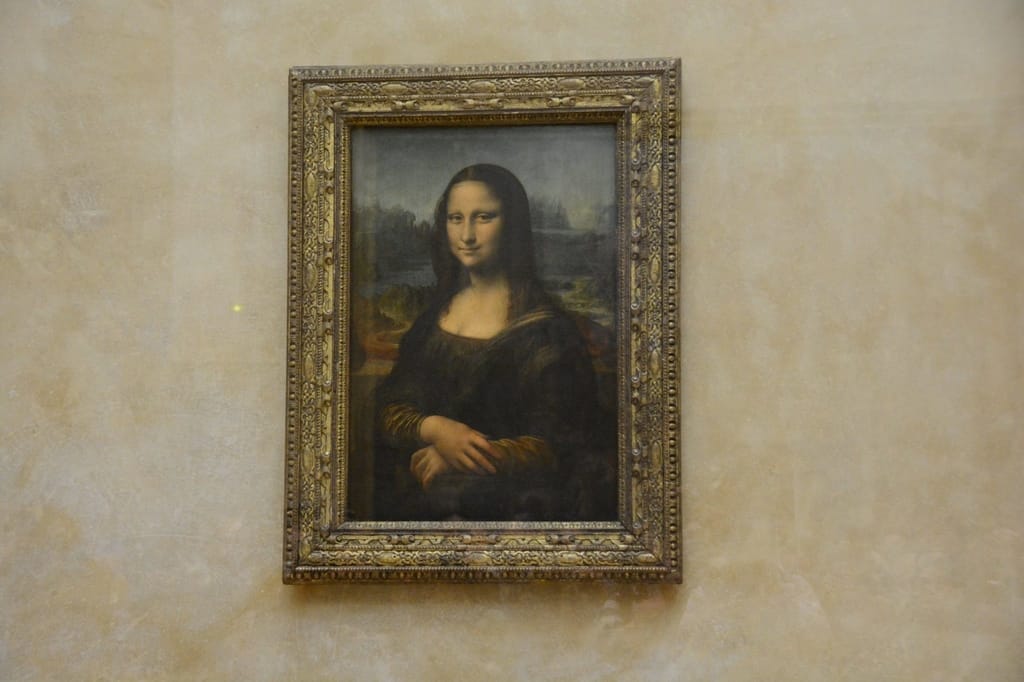
Leonardo da Vinci’s sui generis is painting quite popular in the art world and otherwise. It is a must-see exhibit when you visit the Louvre. It might surprise you that the Mona Lisa is not the most alluring of paintings in the Louvre; nor is it the most beautiful and the artistically accomplished painting. But it is unique for its rare blend of technical mastery, new artistic techniques, provenance to a celebrity artist, and an intriguing story.
Da Vinci was a celebrated figure in his day as a top-premium artist extraordinaire and a polymath. Because only a few of his paintings survive, each one has gigantic value as the work of a man whose name was and is a synonym for genius. He painted the Mona Lisa with his own technique called “sfumato”. This is layers of semi-transparent paint wash one on top of the other to create a sense of three dimensions using light and dark.
Given the realities of the day, it was revolutionary, so da Vinci was creating images that no one could imitate. That ended up being Mona Lisa’s smile, a work which has been the underlying topic of numerous works of art criticism. We are not really sure if she is happy, sad, or confused. And that is the type of charm that art historians love to bicker about, which does not look like ceasing in the future.
Interestingly, the Mona Lisa was stolen in 1911 and not recovered for two years; making everyone believe it would be gone for a long, long time. By a stroke of fortune, it was recovered, and today it exudes regal elegance. Today the Mona Lisa is the most popular exhibit at the Louvre museum, and the best time to see it without strain is at closing time. The crowd is thin by then.
The Winged Victory of Samothrace
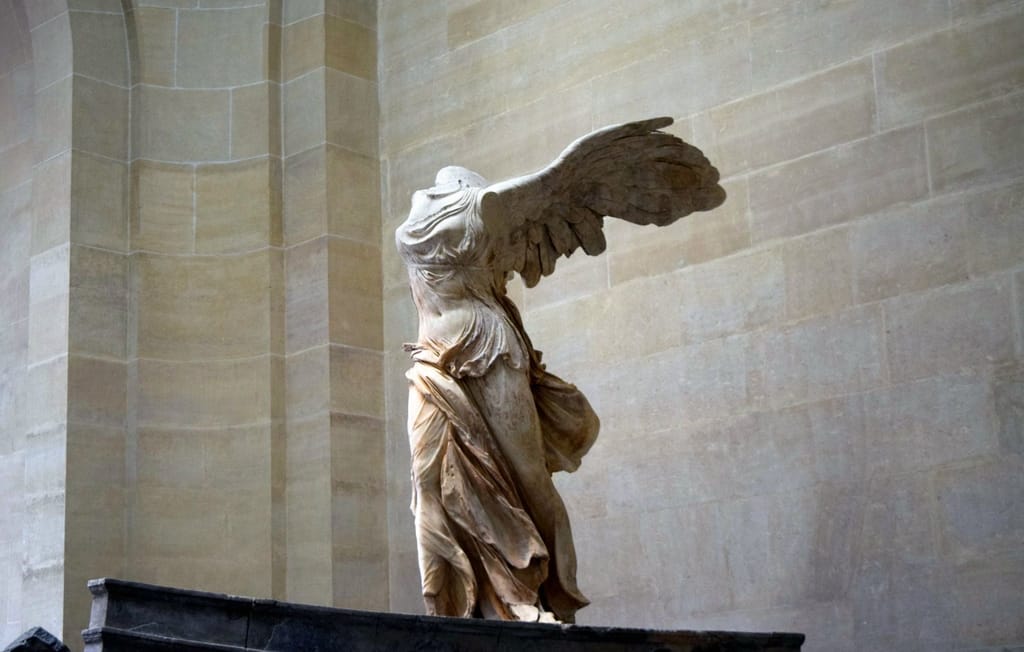
This statue is one of the oldest and most significant in the world. Maybe you have been to an art museum anywhere before now. You might have surely seen more than one classical figure carved from stone in the Greek form by an ancient hand. What you might have missed is that many of those statues are copies made by Romans of Greek originals. It will interest you to know that not only are these original Greek statues older than their Roman copies. They are also very rare.
Only a few have survived to the present day; the Winged Victory of Samothrace is the best of the pack. Though we do not know the sculptor that made this gorgeous piece of art, the technical mastery of the work and the imagination of elements around it have undoubtedly made it one of the single most important sculptures in Western art history.
>>Things To Do Near The Louvre
Death of the Virgin
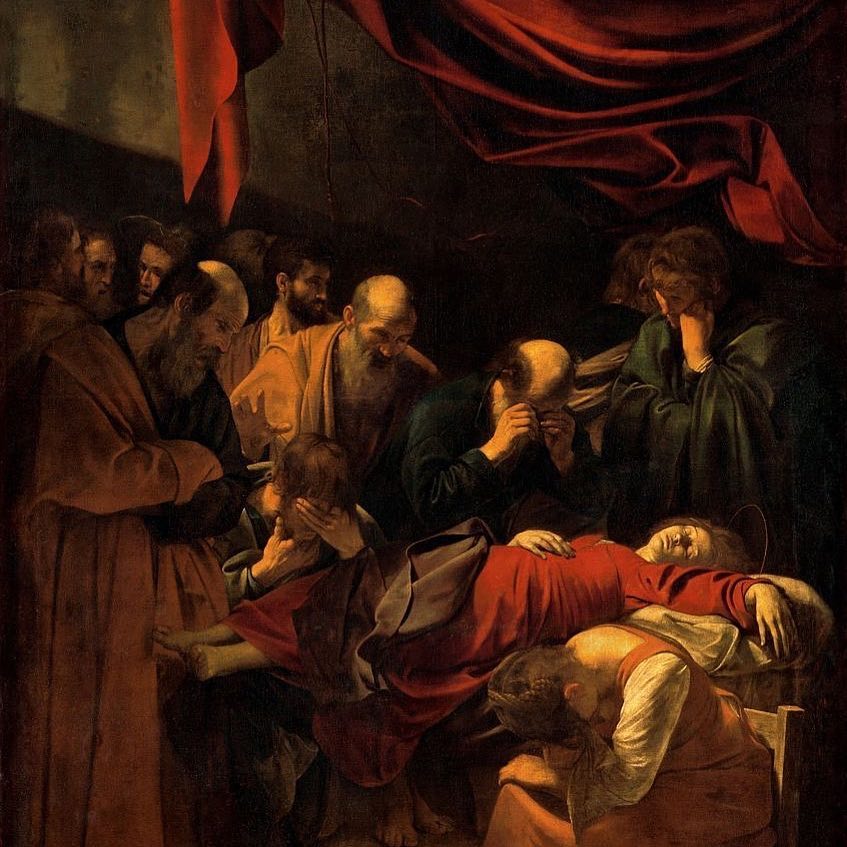
Michelangelo Merisi de Caravaggio was the anecdotist and revolutionary painter of his day; in Death of the Virgin, we can see the reasons why. Why his contemporaries worked to show the saints as unachievable abstractions, Caravaggio’s saints are endowed with the pains and the audacity of reality. In this work, we are made to understand the universal human emotions of grief and despair. This work of art also displays the painter’s most aesthetic painting of fabric; with red drapes taking about one-third of the canvas. The painter made a masterpiece that is still relatable in today.
>>Info About Visiting The Louvre
Psyche Revived Cupid’s Kiss

The love affair between Psyche and Cupid is one of the riveting classical romances. The statue was made by Antonio Canova; one of the last of the era-shaping Italians; mildly reflects the most striking moment of the story. Even though Canova, who was a favorite of Napoleon, wheedled the two characters from cold marble, the work pulses with both romance and burning passion. The statue also demonstrates a surprising but idyllic way to kiss someone.
(Aphrodite of Milos) The Venus de Milo
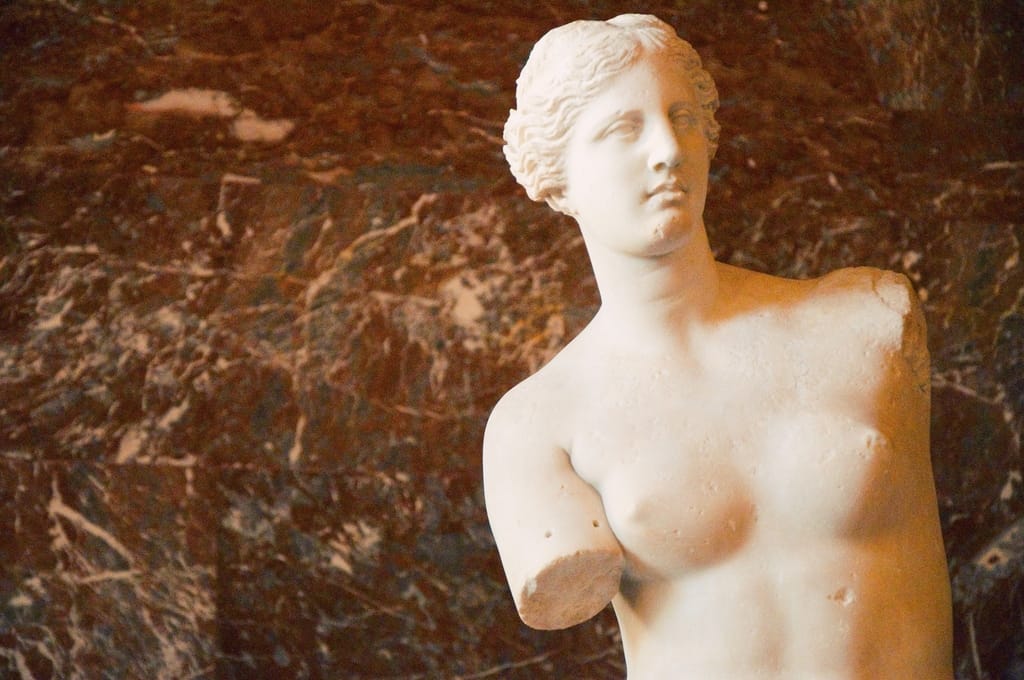
Regarding classical depictions of female beauty, the Venus de Milo stands out. This might be the most famous piece of art in the world. With Michelangelo’s David and the Mona Lisa, this extraordinary piece is familiar work to many art lovers across the globe. Over 2,000 years old, the iconic figure’s missing arms make it one of the most lasting representations of the ideal female beauty in existence.
The French helped things along; since obtaining the statue from the Greek island of Milos (or Milo, in French) in 1821, they have promoted it well. It is even said that they caused a scandal in the art society by hiding its Hellenistic roots to claim that it was older, and consequently more valuable; it was thought at the time that Classical art was of a greater degree than Hellenistic art.
Even though it is a few hundred years more modern than some French scientists were originally claiming, today the Venus is one of the few works of art that still inspires transcendental awe among many who view it.
>>Budget Hotels Near the Louvre in Paris
Lamassus
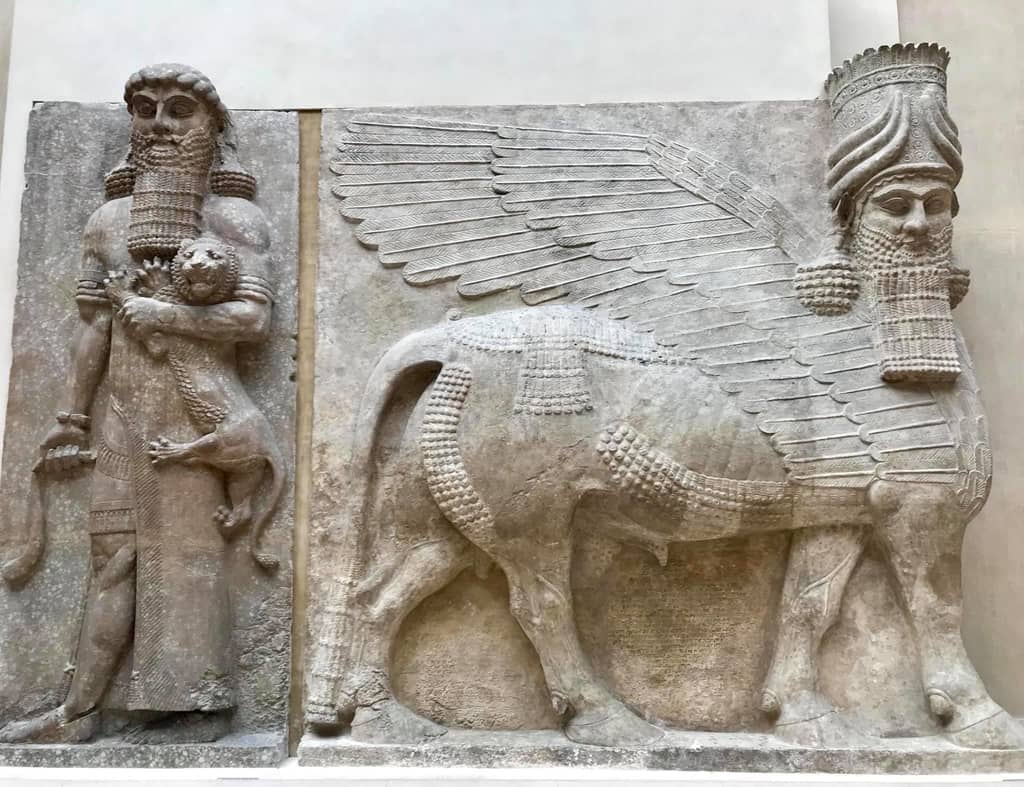
This exhibit dates back to 713 BC, and it is of Mesopotamian origin. These “protective spirits” have five legs, which from the side look like four walkings. From the front, they are still and standing “at attention”, where pairs of these “Lamassus” shielded each gate to Sargon II’s Mesopotamian capital. The city had 24-meter thick walls. In the 19th-century, when the French council was sending these Lamassus back to the Louvre, two devastating shipping events caused much of the to go missing. One through a boat sinking and the other was lost to pirates.
>>Why You Could Skip The Louvre
Law Code of Hammurabi

Another Mesopotamian exhibit is the Law Code of Hammurabi. It is the longest surviving text from Old Babylon and is often famous as the first written economic formula. Today, many laws from Hammurabi’s code are very much part of the world; interest rates, fines for financial wrongdoings, inheritance laws, etc. Setting a legal legacy, it is one of the earliest examples of the idea of presumption of innocence; requesting that the accused and accuser provide evidence to plead their cases. The code is also famous for its scaled punishments, changing the “eye for an eye, tooth for a tooth” maxim as determined by social status.
The Raft of the Medusa
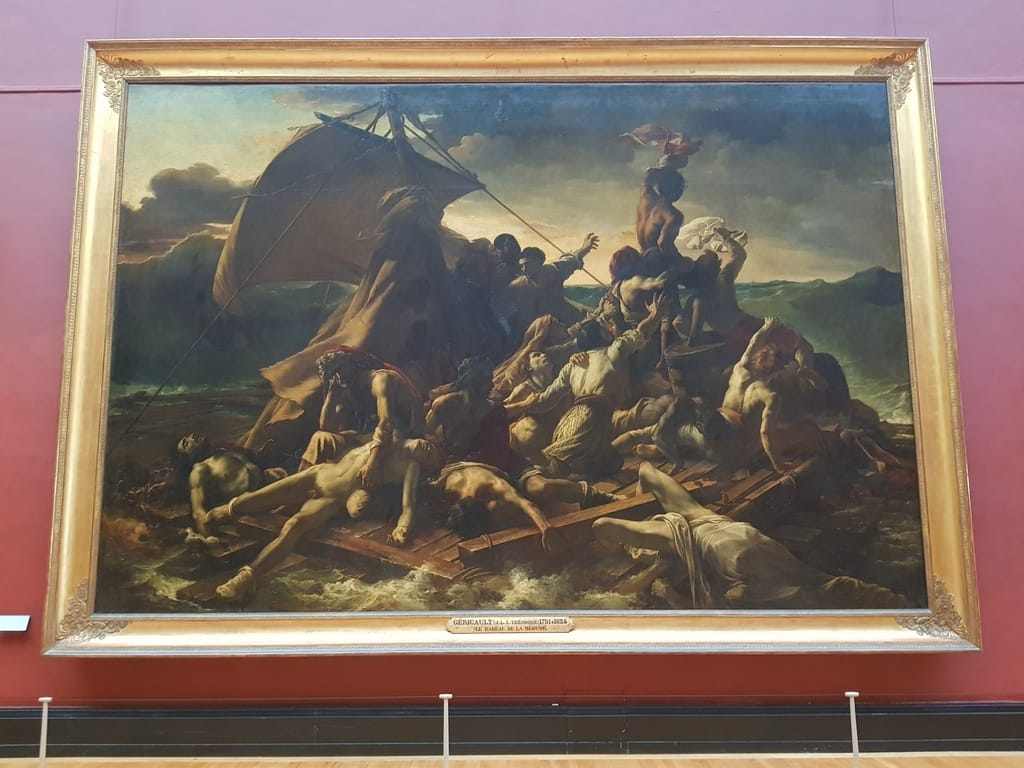
Due to poor navigation, a French shipwrecked off the coast of Mauritius; 151 of the 400 sailors aboard ended up drifting on an impoverished raft with lots of wine but very little food and water. It is said that heaving drinking, murder, mutiny, and cannibalism ensued. By the time help would come, only 15 of the original 151 were left alive.
But out of the ordeal came a painting by Theodore Gericault. It helped to define the French Romanticism movement known as The Raft of the Medusa. Apart from being a simply incredible artwork, its creation marked a drastic shift from idealized themes employed by the Neo-classicism to the more dramatic and emotional subjects of Romanticism.
The Dying Slave
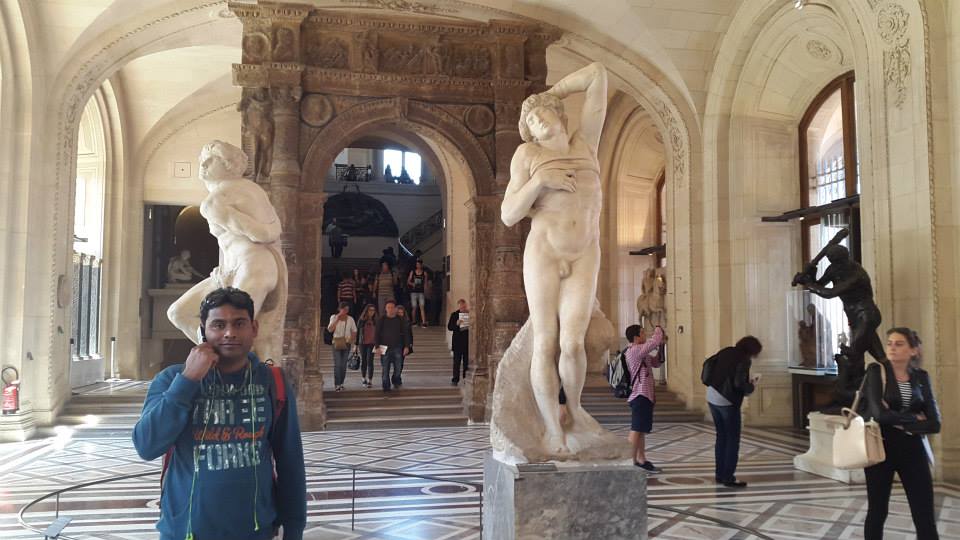
For some art experts, the only other genius of the Renaissance that can match the iconic status of da Vinci is Michelangelo Buonarroti’s Dying Slave. That is because it shares the intricate combination of eroticism and emotion of his most influential work, his statue of David in Florence. The Dying Slave demonstrates all of the anguish and the elated bliss that typifies the artists’ work.
Most Popular Exhibits at the Louvre – Conclusion
By all indication, France has a lot more to offer in terms of artistic inclination. The Louvre deserves all the hype it gets; it simply houses some of the best works in history, and it inspires a generation. And the good thing is that when you visit the museum, you have the chance to see both permanent and temporary exhibits that would blow your mind.
